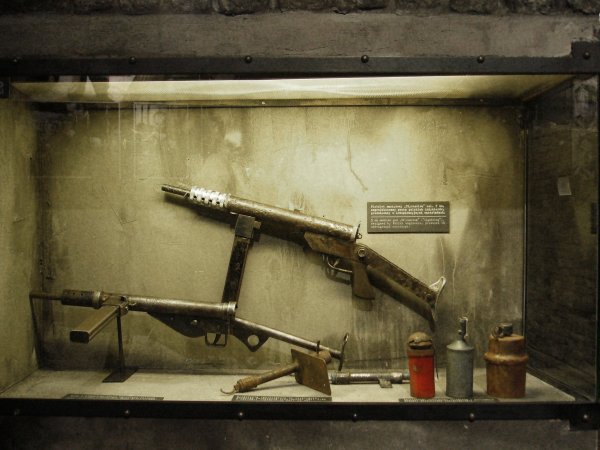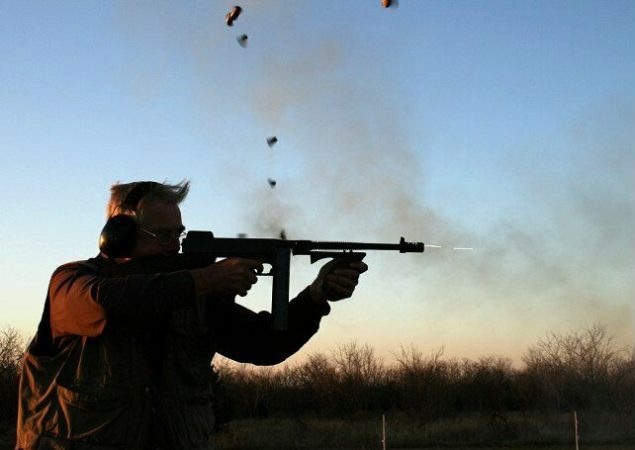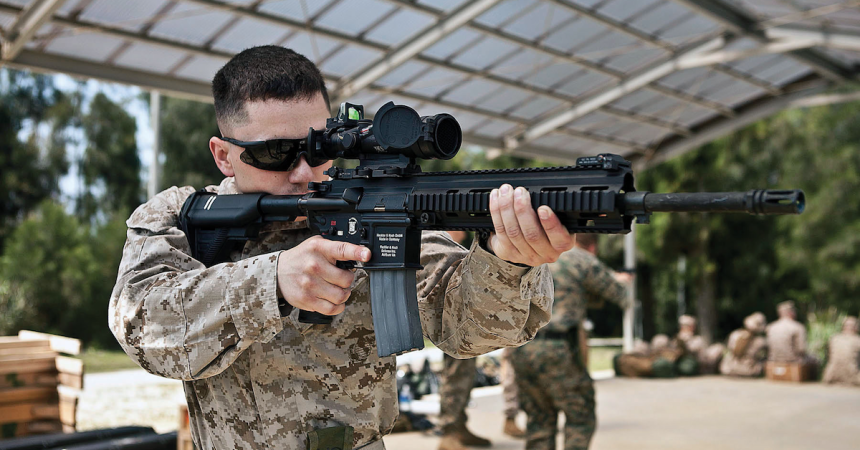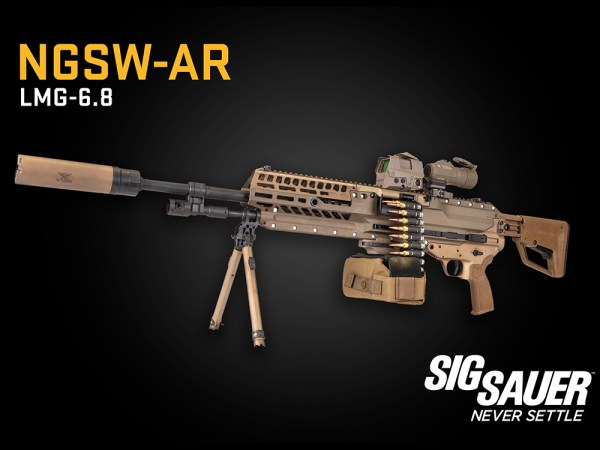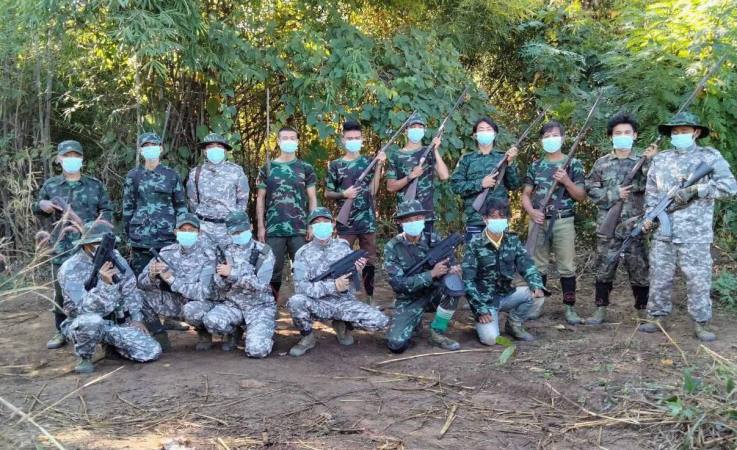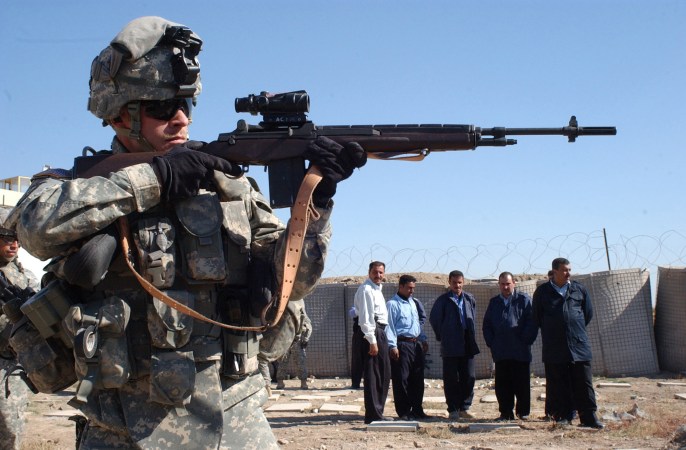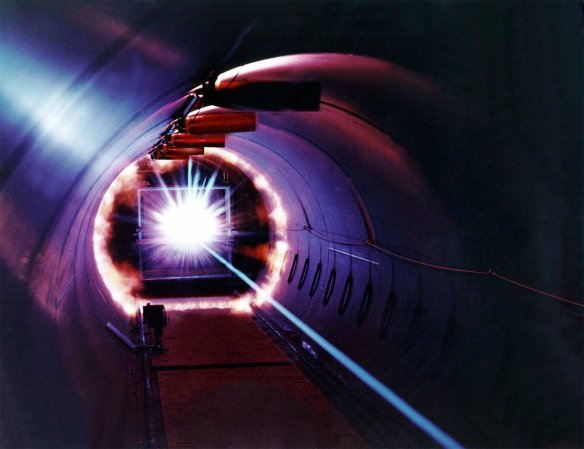It’s weird- and whacky-looking.
It looks like it was made from mismatched pieces of plumbing.
What’s more, there is nothing “down under” about this Australian weapon’s magazine. The magazine loads into the top of the Owen gun – and spent cartridges eject from the bottom of its receiver.
But despite all its oddball features, despite the fact it was painted with jungle camouflage colors that defy description, the Owen worked astoundingly well.
The Owen is considered one of the most reliable submachine guns of the war, with a track record that not only includes the War in the Pacific but service with Aussies who fought in the Korean War and alongside U.S. troops in Vietnam.
Mind you, that’s a performance record earned during jungle warfare — an environment known for producing the kinds of things that cause weapons to jam at the worst possible moment.
The gun is the namesake brainchild of Lt. Evelyn Owen, a member of the Australian Imperial Forces who loved to tinker with firearms.
In 1938, Owen designed and built a homemade .22-caliber automatic carbine that had a large revolver-style cylinder instead of a magazine and a thumb-operated trigger.
Unfortunately, the contraption interested no one in the military. Owen literally set the gun aside, storing it in a large sugar sack and going about his business as an Army private.
The Australian military brass distrusted submachine guns, putting their faith in the tried and true Lee-Enfield rifle. Besides, they had been promised the Sten gun, a weapon touted by its designers to be more than adequate in battle.
But then came the fall of France in 1940. The British lost thousands of small arms that were destroyed or simply abandoned after the devastating rout at Dunkirk.
Bolt-action rifles from The Great War and hunting guns were often the only firearms available for some units. Terrified generals in Australia knew they did not have enough weapons to repel a Japanese invasion force – and the Sten gun wouldn’t be production until 1941.
However, Owen had a neighbor who managed a large Australian steel products factory. Vincent Wardell found the prototype gun and expressed admiration for the design.
Owen’s father, embarrassed by his son’ carelessness, explained to Wardell how the younger Owen tinkered with weapons. Wardell didn’t care about whether the son picked up after himself – the simplicity of the firearm convinced Wardell that Owen’s skills were wasted as a mere foot soldier.
Wardell convinced the Australian military to transfer Owen from the infantry to the Army Inventions Board, which directed the development of new weapons.
Newly promoted Lt. Owen started to develop additional prototypes in different calibers. Slowly, the Australian government began to take an interest in his ideas.
In 1942, the John Lysaght metalworks factory made three versions of the Owen in 9-millimeter Luger, .38-200 caliber and .45 ACP. All were subjected to stress tests along with a Thompson submachine gun and the Sten gun as benchmark weapons.
The tests included immersing all of the guns in mud and water, then blowing sand at the weapons. The only gun that didn’t jam was the Owen.

In fact, the top-mount magazine proved beneficial. Gravity helped feed bullets into the gun, and the ejection port at the bottom of the receiver meant water and gunk drained out of the chamber more easily.
In short, the Owen Machine Carbine as it was called officially was perfect for jungle warfare.
The government wanted the nine-millimeter version. Eventually, Lysaght produced 45,000 weapons and they were a hit with the Australians soldiers – nicknamed “diggers”—who wielded them.
It only weighed 10 pounds, fired at about 700 rounds a minute from an open bolt, and was easily fired from the prone position.
About its only disadvantage were the offset sights. The top-mounted magazine blocked a normal sight picture, so the sights on the Owen are designed so the shooter looks around the magazine – but it only works for a right-handed shooter.
The Owen routinely out-performed the Sten gun –known as the Austen in its Australian incarnation – and was so well liked that Gen. Douglas MacArthur even considered it for American jungle forces in the Pacific.
During the Korean War, the Owen remained in the Australian arsenal. Even though the Lee-Enfield rifle was the main weapon for the infantryman, Owens found their way into the hands of many soldiers. During the Battle of Kapyong in 1951, any Australian soldier who could get his hands on an Owen used one.
“All hell broke loose as Diggers cut down the surge of attackers, directing into them as much rapid fire as their weapons could produce, the Owen submachine gun being the most effective weapon for this and the dear old single-shot Lee-Enfield the worst,” Maj. Ben O’Dowd, 3 Royal Australian Regiment, Alpha Co., said in an oral history of the battle prepared for the Australian War Memorial.
Helicopter search-and-rescue crews also carried Owens, using them to fend off Chinese Communist and North Korean troops attempting to capture downed airmen.
In addition, infantry scouts and commando units carried Owens during Australian participation in the Vietnam War.
The Australians retired the Owen from mainline service in 1971. However, it still occasionally appears in the hands of special operators when they train fellow soldiers undergoing a weapons familiarization course.
Regrettably, Evelyn Owen’s life was far shorter than the oddball but long-lasting weapon he designed. Owen received £10,000 in royalties – about the equivalent of $728,000 today – but sold the patent rights for the Owen submachine gun to the Australian government.
Owen built a saw mill with the money he received. He continued to tinker with firearms, particularly sports rifles, but he never achieved the same success he had with the Owen gun. In addition, heavy drinking took a toll on his health.
He died of heart failure in 1949 at the age of 33.



